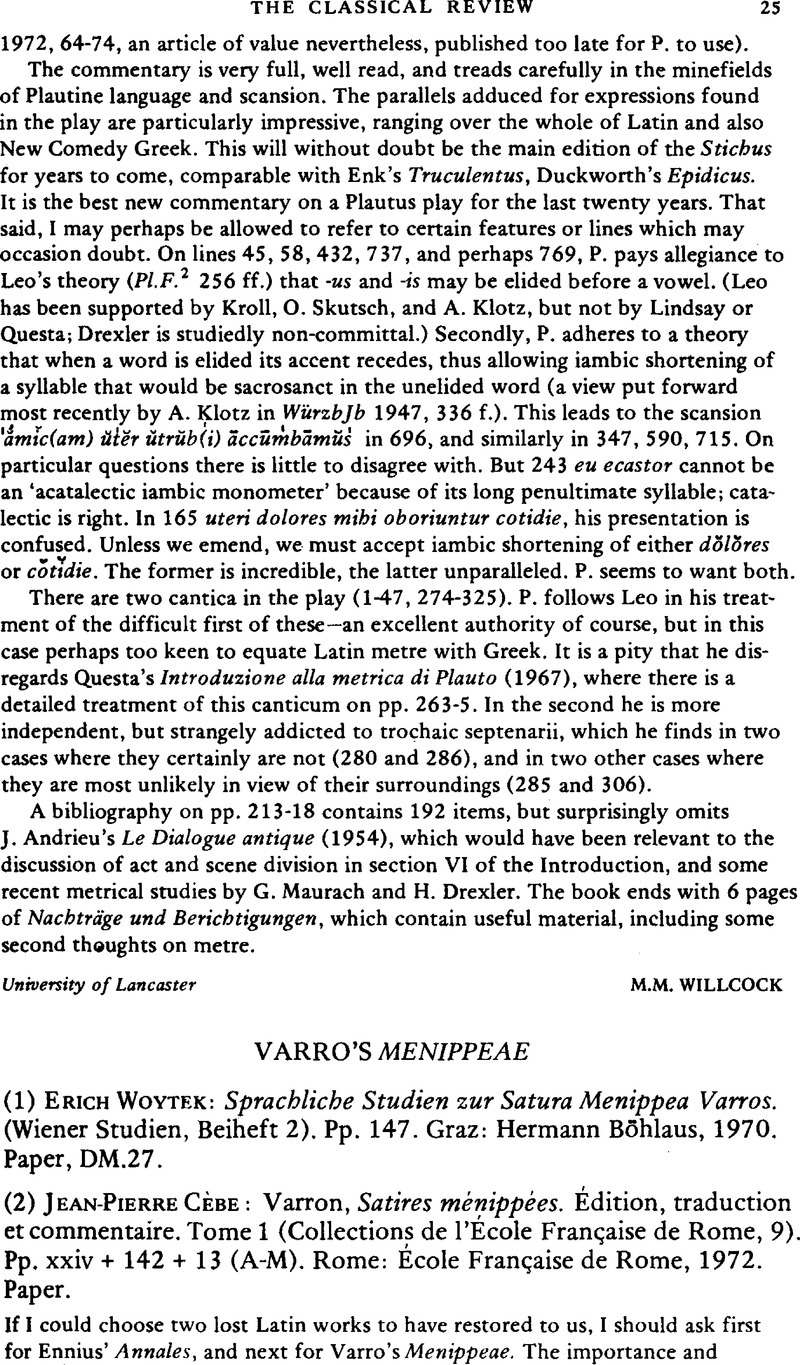No CrossRef data available.
Article contents
Varro's Menippeae - (1) Erich Woytek: Sprachliche Studien zur Satura Menippea Varros. (Wiener Studien, Beiheft 2). Pp. 147. Graz: Hermann Böhlaus, 1970. Paper, DM.27. - (2) Jean-Pierre Cèbe: Varron, Satires ménippées. Édition, traduction et commentaire. Tome 1 (Collections de l'École Française de Rome, 9). Pp. xxiv + 142 + 13 (A-M). Rome: École Française de Rome, 1972. Paper.
Published online by Cambridge University Press: 27 February 2009
Abstract

- Type
- Reviews
- Information
- Copyright
- Copyright © The Classical Association 1976
References
1 This is the standard edition (revised by W. Heraeus, 1922); the editions of E. Bolisani (Padua 1936) and F. Della Corte (Turin 1953) should also be mentioned.
2 p. 15.
3 p.5, n.l, on ‘misoneisme’.
4 p.62, n.l starts, as it ought, on the subject of Greek in Varro, but soon turns into quite an extensive and good little essay on the place of Varro's Menippeae in the Roman poetical tradition. The alien provenance of this whole passage is suggested not only by the context, but also by the op. cit. references, which lead nowhere.
5 In spite of Nonius' lemma. I do not know what happens when you puncture a bladder filled with air, and I do not propose to find out by experiment: I suspect that, apart from a bang, you get a noxious smell. This, at least, is a possible meaning for ⋯⋯ρ; cf. LSJ s.v.
6 But 26 C = 29 B ‘edepol idem caecus non luscitiosus est’ is no iambic senarius, as Cèbe thinks; the absence of a ‘caesura’ is entirely unobjectionable, but the ‘line’ has two separate metrical faults which would be removed if one rewrote it thus: ‘edepol caecus quidem non luscitiosus est’.


